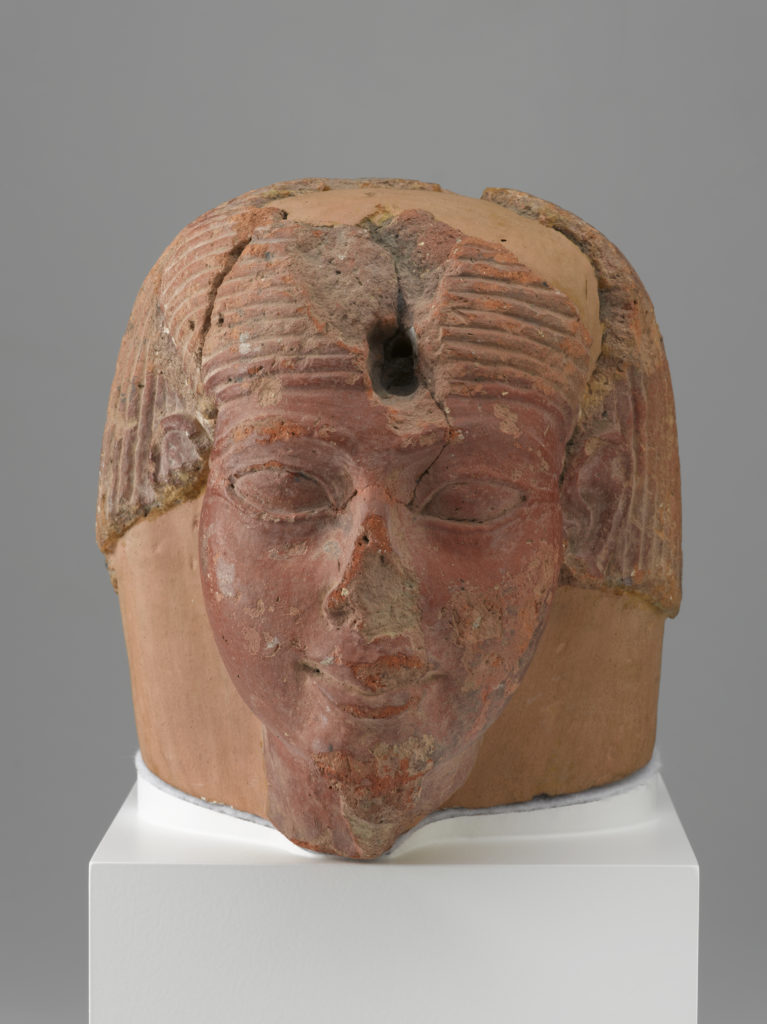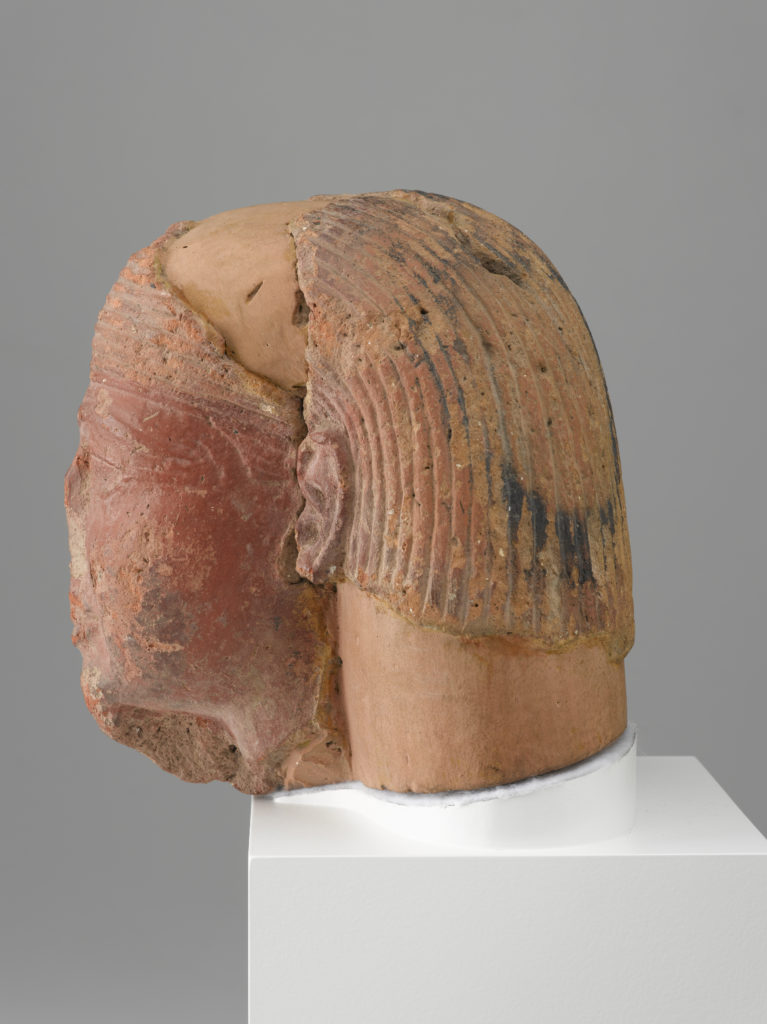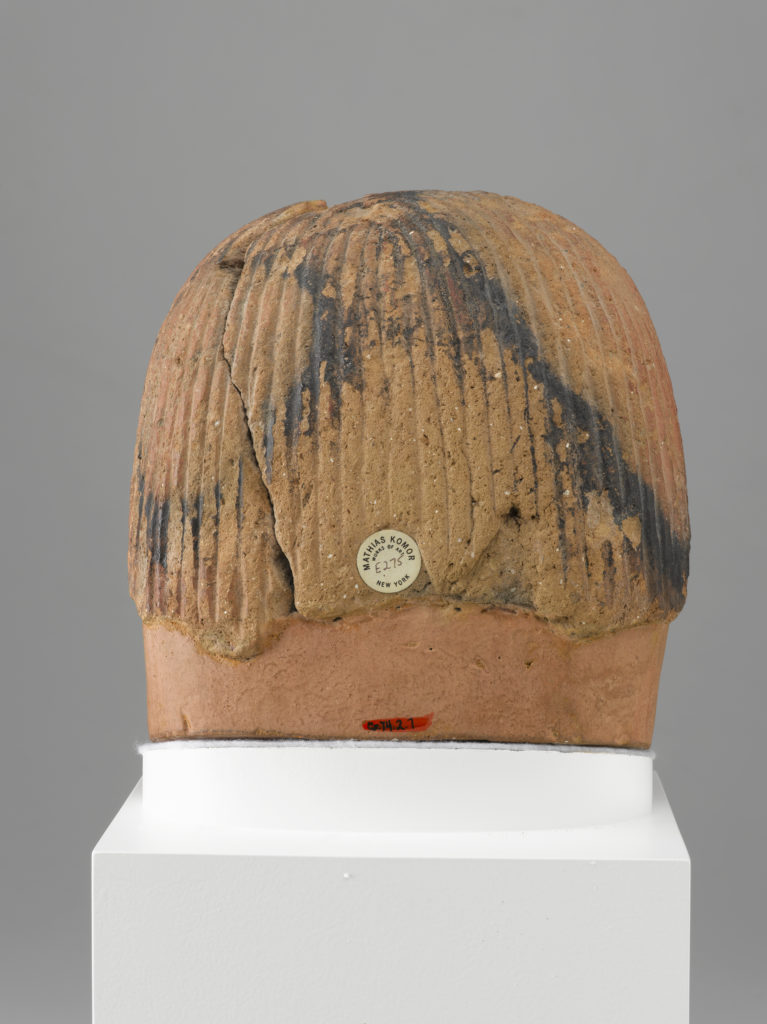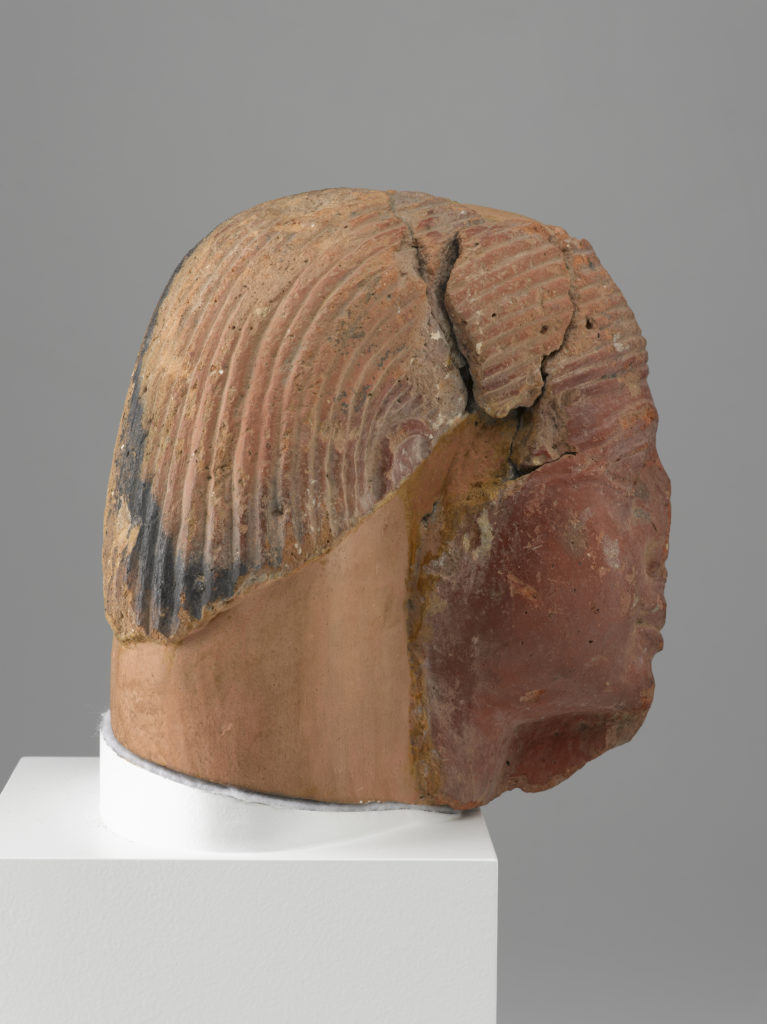Head of a Deity (work of art)
Artwork Info
Key Ideas about this Work of Art
- Head of a Deity is a “portrait head” sculpture that is believed to depict Osiris, the ancient Egyptian king of the underworld. A deity is a god or goddess. According to Egyptian myths and legends, Osiris was the first mortal (human) king to be mummified and reborn in the afterworld as a god.
- Modern scholars determined that this artifact is a likeness of Osiris based on several features: the broken false beard, a missing uraeus, and the remnants of a divine wig.
- Death did not mean the end of life in ancient Egypt. Under the protection of magic spells (often written on or carved into their funerary goods), ancient Egyptians believed that the ka, or soul, of a deceased person could have a peaceful life in the underworld and begin a new life cycle. By depicting Osiris in a physical form, ancient Egyptians hoped to achieve rebirth and eternal life.
- The only other known artifact (ancient object) in the world that is similar to this one is in the Egyptian Museum in Cairo.
Learn More
The Egyptian god Osiris was the first mortal king to be mummified and reborn in the underworld, according to Egyptian mythology. As the ultimate deity of the world after death, Osiris was the most important symbol of resurrection. Ancient Egyptians depicted Osiris in different forms, in the hope of being reborn and having eternal life. These forms included shabtis (funerary figurines) and grain mummies, which were lumps of Nile mud and grains (such as wheat or barley) shaped like mummified humans.
Although this portrait head is damaged, several features point to its possible identity as Osiris. The deity is depicted wearing a broken false beard (a type of fake beard worn by pharaohs and the dead) and a missing uraeus (a golden cobra that would have been inserted into the hole above the eyebrows). Both features are symbols of a king. The horizontal marks on the forehead represent a divine wig, which could only be worn by gods. The head is almost eight inches tall and would have been part of a full-body statue. This means that the original representation of Osiris was not a small figurine. It was a statue that stood more than 40 inches tall.
The style of the facial features suggests that Head of a Deity was made during the 18th Dynasty of ancient Egypt. Once thought to be a fake, the head was sampled for thermoluminescence dating to determine when it was last fired in a kiln. NCMA conservators took samples by drilling into the object in a dark room illuminated by a red light. The test revealed that Head of a Deity is genuine, and it dates back to the New Kingdom Period (about 1550 to 1069 BCE). There is only one other similar artifact in the world, and it is in the Egyptian Museum in Cairo. It is difficult to determine where this ancient object was originally found and what it was used for because it is so old (and rare), and there is not much archaeological information available about it.
Additional Resources
Resources for Teachers:
- Read an article about Osiris.
- Read an article about the ancient Egyptians and their concept of an afterlife.
- Explore the history of terracotta sculpture.
- View an image of the only other Egyptian artifact that is similar to Head of a Deity. It is pictured on the far right.
Resources for Students:
- Watch a video about the mythological death and rebirth of Osiris.
- Watch a video about the Egyptian Book of the Dead.
- Read an article about ancient Egyptian art.




